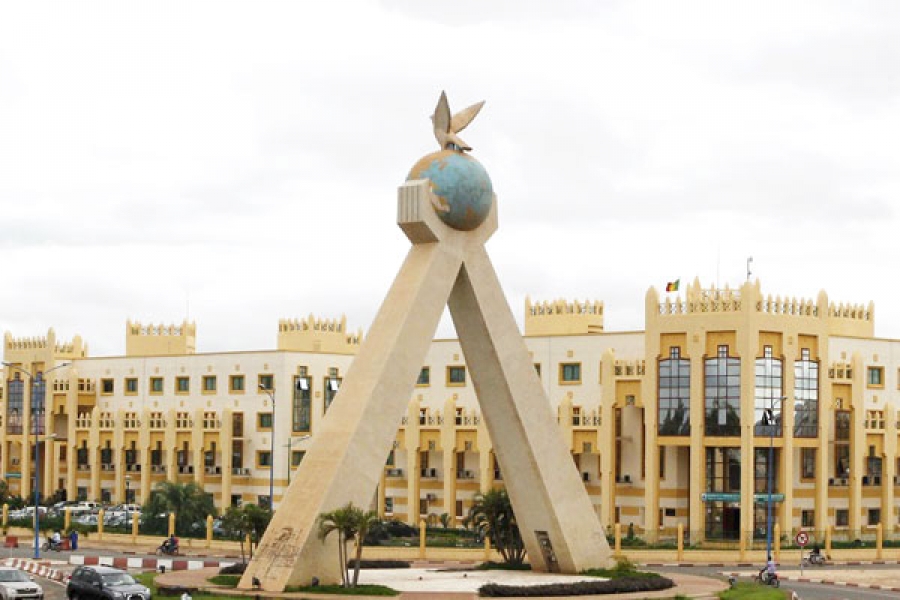Climate change a never ending threat to water and sanitation in Africa

Access to clean water, adequate sanitation and good hygiene are fundamental for a healthy life. Despite being basic necessities, for many millions of people the reality is very different. The latest report from the WHO and UNICEF reveals that 844 million people, or one in every nine people today, do not have access to clean water, while 2.3 billion people, around one in every three people on the planet, do not have decent sanitation or toilet facilities.
Africa is a continent not short of challenges regarding improved access to clean and safe water and basic sanitation services. With one of the highest rates of population growth, meeting basic needs fundamental to a healthy and liveable society will become increasingly challenging over coming decades. The added complexity brought by climate change-related water scarcity, will make meeting the water and sanitation targets embedded in the Sustainable Development Goals (SDGs) harder still. More positively, these challenges will prompt water and sanitation service providers to innovate, and to mobilise resources to meet the goal of universal access to water and sanitation by 2030.
Achieving these goals was a priority for those who attended the recent African Water Association Congress (AfWA) held in Bamako, Mail. The meeting demonstrated the African water sector’s commitment to ‘accelerate access to sanitation and water for all in Africa amidst the challenges of climate change’. Identifying climate change as an ongoing threat to water and sanitation services, the AfWA Congress offered an opportunity for scientists, researchers, water services practitioners, consultants, regulators and experts from other sectors, to not only highlight the need to improve drinking water and sanitation services across the continent, but to debate the challenges and collaborate on solutions.
The impact of climate change on drinking water supplies is both clearly understood but also filled with uncertainty and unpredictability. Climate change impacts quality and quantity of raw water sources, intensifying the challenges faced by water utilities in their efforts to meet consumer demand for safe water. One approach to mitigate risks and ensure safe drinking water is through Water Safety Plans, a comprehensive risk assessment and risk management approach from catchment to consumer supported by appropriate monitoring. The Flood and Drought Management Tools[1] (FDMT) project held a workshop titled “Climate Resilient Water Safety Planning Tool Demonstration”, to demonstrate a way to integrate climate information into Water Safety Planning that could significantly improve water security.
Unstable water supply and water borne disease outbreaks show that the conventional approach of monitoring end product water is not sufficient to guarantee safe drinking water. With floods and droughts occurring more frequently, there is a need to improve the planning and management of water supplies by anticipating the impact of extreme events, or risk compromising the provision of safe water. Planning for an adequate and safe supply of drinking water needs to be set in the context of the growing uncertainty from climate risk.
The Water Safety Planning process is an entry point for water utilities to address climate risks. Recognising this, the FDMT project is developing a package of tools, accessible through the Flood and Drought Portal, which provide users with a scientific approach to identify and evaluate the impact and risk of flood and drought hazards, and plan for mitigation and adaptation measures. It does this by giving users access to satellite-based, near real-time data including climate information such as rainfall,
temperature, information about flood and drought indices, climate forecast and climate change. The outcome enables users to compile information, from models, indicators to better inform their planning approach so as to develop future planning approaches that are resilient and pragmatic. Within the context of a changing environment, apprehension towards capacity building for water and sanitation professionals, development of scientific and technical approaches and sharing of knowledge were concerns voiced by water and sanitation professionals attending the AfWA Congress. Some of these concerns are addressed within the Flood and Drought Management Tools project. Capacity development on the use of the technical applications, particularly by water utilities that by tradition do not access climate data or integrate it in their planning, are among the key activities and the focus of the remainder of the project.
[1] The FDMT project is funded by the Global Environment Facility (GEF) International Waters (IW) and implemented by UN Environment (UNEP), with the International Water Association (IWA) and DHI as the executing agencies. The project is developing online technical applications which can be applied individually or together at the basin or local (water utility) level to facilitate the inclusion of information about floods, droughts and future scenarios into Integrated Water Resources Management (IWRM) planning, Transboundary Diagnostic Analyses (TDA) and Strategic Action Plans (SAP), and Water Safety Planning (WSP). The project is being implemented from 2014 - 2018, and 3 pilot basins (Volta, Lake Victoria and Chao Phraya) are participating in development and testing.
Sources
African Water Association: http://www.afwa-hq.org
Climate Resilient Water Safety Planning Tool Demonstration: Summary report
Facts and statistics: https://www.wateraid.org/facts-and-statistics
WHO/UNICEF Joint Monitoring Programme (JMP) Report 2017. http://apps.who.int/iris/bitstream/10665/258617/1/9789241512893-eng.pdf?ua=1
